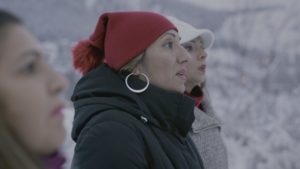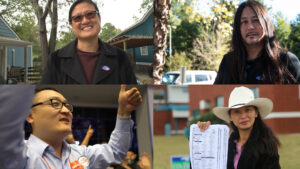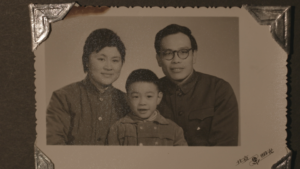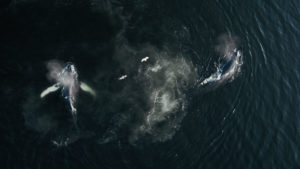Q&A with Tobyn Neame from Wilderness Committee
- Apr 9, 2024
- /
- 2024 Events, Blog, Environment, Indigenous
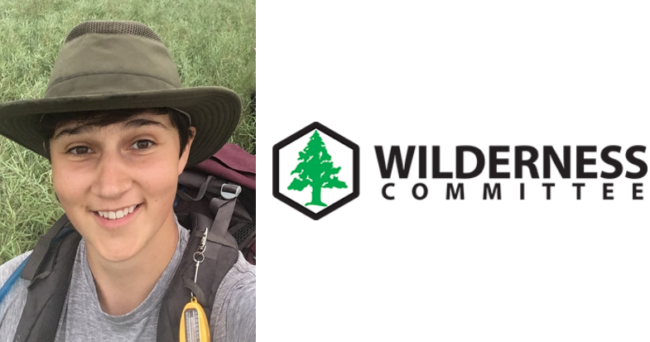
By Anson Tso
As the conversation continues beyond our A Cedar Is Life event in Victoria last month, we had the opportunity to catch up with Tobyn Neame, a Forest Campaigner for the Wilderness Committee whose work focuses on fighting threats facing old growth and new forests in BC. As a strong advocate for healthy, functional and well-established ecosystems, it was such a pleasure to have them join the panel discussion.
In this Q&A, Tobyn shares their reflections from the event, their background and passion for protecting endangered ecosystems, aligning conservation strategies with Indigenous peoples and knowledge systems, and the next steps for the Wilderness Committee.
How was the event? Was there anything in particular from the film and/or the discussion that really resonated with you?
It was wonderful to connect with folks interested in the importance of cedar and the forests these iconic trees are a part of. Something that resonated with me particularly was the vast diversity of connections to cedar – from the continuation of tradition to the building of friendships and the survival of people through extreme harm. This film showed how so many different individuals, from different First Nations and backgrounds, each had strong connections to the forest. Connections that are diversified from the singular value of trees for lumber.
As a Forest Campaigner for the Wilderness Committee, could you shed some light on what your role involves and what motivated you to pursue that path?
I have always been motivated to pursue the protection of endangered ecosystems – be it the aspen parklands in the prairies where I grew up or the old-growth forests here. The ecosystems that would naturally and historically occur in an area are the most important for combating climate change, halting biodiversity loss and supporting First Nations’ sovereignty – all three of which are intricately intertwined. My role is to support the protection of the remaining patches of endangered old-growth forests in the variety of ways that may come about. We at the Wilderness Committee spend lots of time on the ground keeping track of where logging is happening, staying up to date with current forest policy and applying pressure to change it, supporting grassroots groups with individual issues and keeping our supporters informed and organized on how to apply pressure to the government and logging companies to enact larger scale change. We also share our resources and abilities with First Nations and Indigenous people that are leading fights on their territories for protection of forests.
How do you see the film aligning with or inspiring the ongoing work of the Wilderness Committee?
This film speaks to the variety of motivations people have to care about and wish for the continued survival of old-growth cedar forests. The B.C. government and logging companies only see one instrumental value for forests, which is for industrial logging. However, it is the thousands of other reasons forests are important and are valued intrinsically and relationally that drive the work of the Wilderness Committee.
The film emphasizes the importance of passing down traditional knowledge to future generations. How does the Wilderness Committee incorporate Indigenous wisdom and practices into its conservation strategies?
The Wilderness Committee is working to decolonize our campaigning and align our approaches to better be in solidarity with Indigenous peoples and communities. We seek to learn from and support Indigenous knowledge systems and ways of being without co-opting this wisdom and practices as our own, and to amplify and uplift the voices and conservation strategies of Indigenous peoples whenever possible. We’re committed to growing our understanding of our responsibilities as settlers doing advocacy on these lands and how to do that respectfully and appropriately, and we know we still have a lot to learn.
What’s currently on the radar for you and the Wilderness Committee? Any exciting projects or initiatives you’d like to share with us?
As we head into an election, we are revamping our engagement tools to make it easier for people to get involved and put pressure on their government representatives and candidates. I am also working on building connections with people and grassroots organizations all across the island who want to meet and set up strategies. The Wilderness Committee also prioritizes direct connection with people and the forests themselves, and we’ve got a busy spring and summer already underway, undertaking field visits to document old-growth logging and connect with communities impacted by it. If people are interested in learning more about what they can do and how we can work together towards better outcomes for old-growth forests, they are encouraged to contact me or the Wilderness Committee through our website.
—
Want to read more? Check out the Q&A with Leslie Bland and Harold Joe, they discuss their insights into making the film, their collaboration, and the broader impact of A Cedar Is Life.

About Reel Causes Society
Reel Causes partners with filmmakers and Canadian causes dedicated to addressing global social justice issues. We host film screenings followed by a Q&A session to educate and inspire our community, and provide a forum for authentic conversation aroundF the issues that affect us locally.
